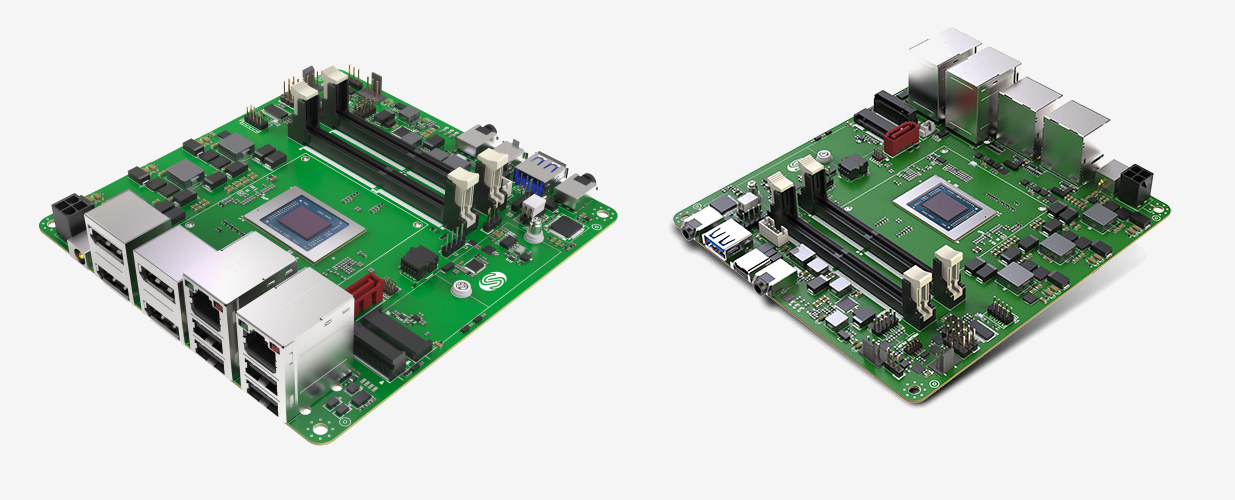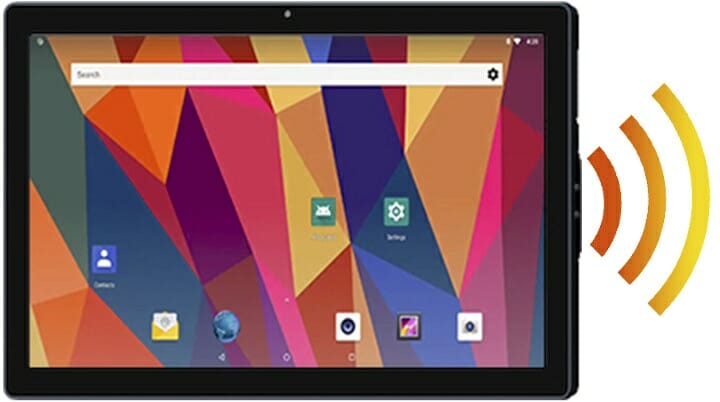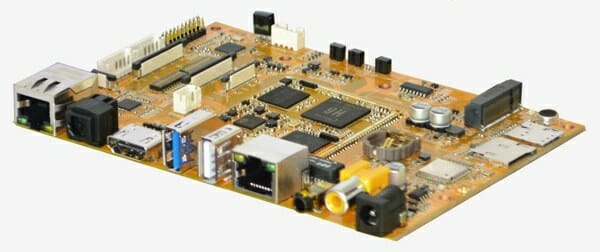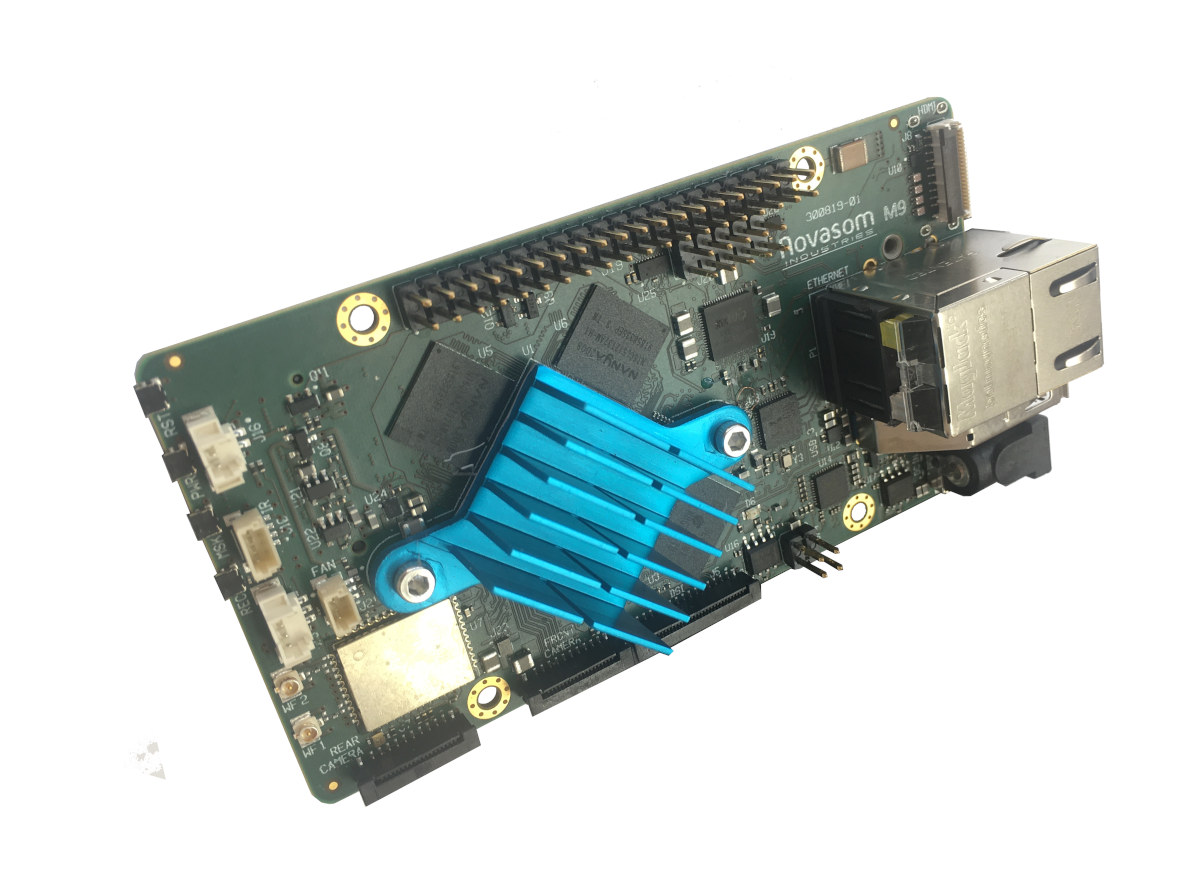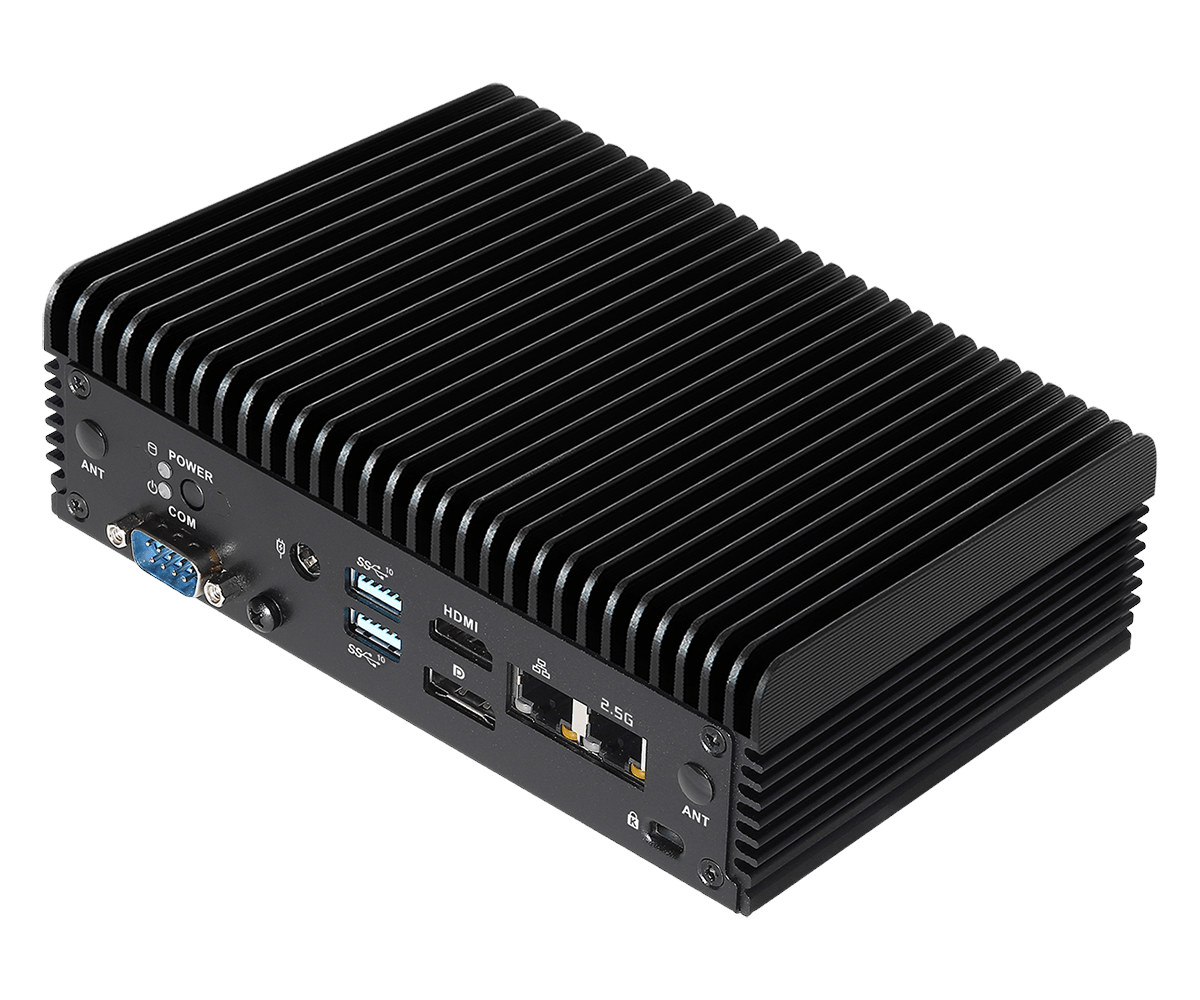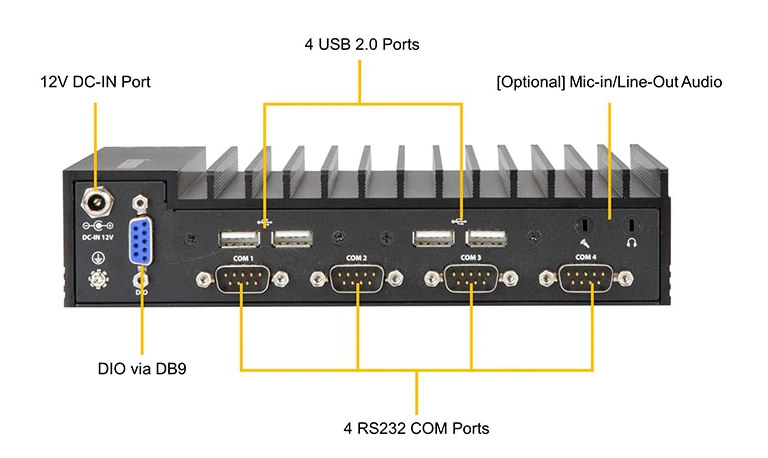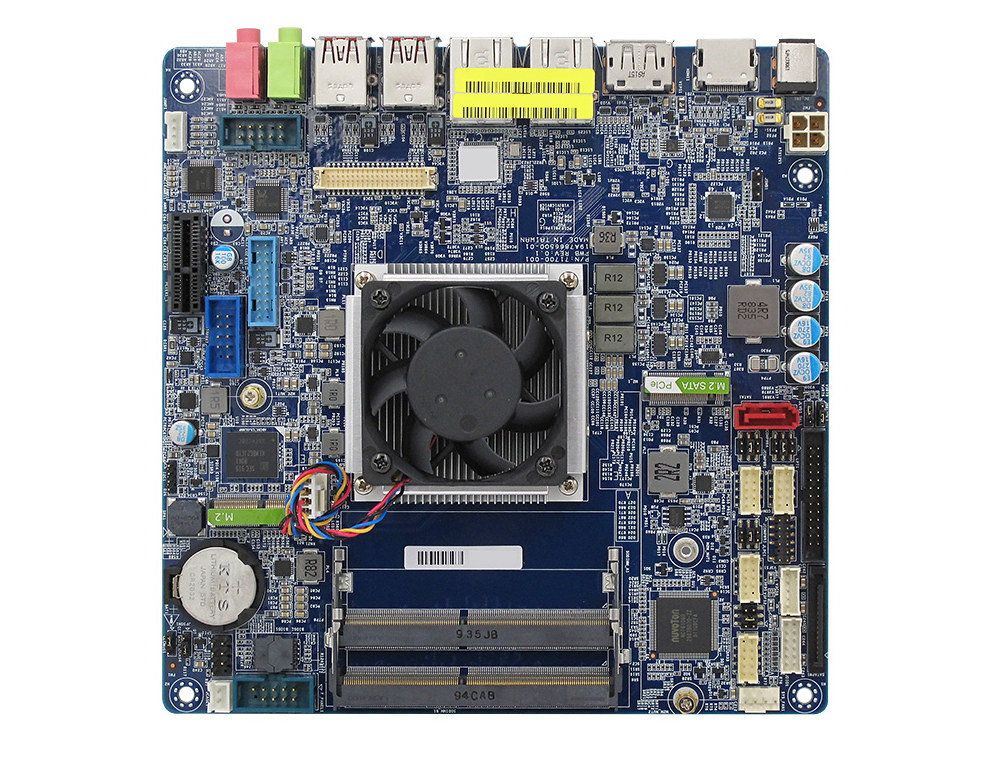SAPPHIRE introduced the FS-FP5V 5-inch SBC powered by AMD Ryzen Embedded V1000 processor in 2018, followed by FS-FP5R board based on AMD Ryzen R1000 processor the following year. But with the launch of AMD Ryzen Embedded V2000 processor family in 2020, it should come as no surprise that Sapphire has also introduced a new 5″x5″ mini-STX SBC powered by Ryzen Embedded V2000 SoCs with Sapphire (V2000) FS-FP6. Sapphire FS-FP6 specifications Specifications with differences against FS-FP5V highlighted in bold: SoC AMD Ryzen Embedded V2516 hexa-core/12-thread processor @ 2.1 GHz / 3.95 GHz (Turbo) with 3MB L2 cache, 6 CUs Radeon RX Vega 6 GPU @ 1.5 GHz; TDP: 10-25W TDP (15W default) AMD Ryzen Embedded V2546 hexa-core/12-thread processor @ 3.0 GHz / 3.95 GHz (turbo) with 3 MB L2 cache, 6 CUs Radeon RX Vega 6 GPU @ 1.5 GHz; TDP: 35-54W TDP (45W default) AMD Ryzen Embedded V2718 octa-core/16-thread processor […]
Foenix 21-5-inch Android 8.1 smart touch computer features MediaTek MT8167A Cortex-A35 SoC
Earlier this week, we covered Wireless Tag’s Industio 7-inch smart display powered by a SigmaStar SSD201 32-bit Arm Cortex-A7 processor and offering both Ethernet and WiFi 4 connectivity. If you’d like a 64-bit processor, a much larger display size, and faster wireless connectivity, Innocomm has just introduced the “Foenix Touch Console” 21.5-inch open-frame touch computer based on the same MediaTek MT8167A quad-core Cortex-A35 processor as found in the PlayStation Classic, and capable of Ethernet and WiFi 5 (AC) networking. Foenix iCOM1019 touch console preliminary specifications: SoC – MediaTek MT8167A quad-core Cortex-A35 processor @ up to 1.5 GHz with PowerVR GE8300 GPU System Memory – 2GB RAM Storage – 8GB storage, MicroSD card slot Display – 21.5-inch PCAP touchscreen display with 1920×1080 resolution Video Output – Optional HDMI 1.4a Audio – 2-channel 6W amplifier, 2x digital microphones, 3.5mm 4-pole audio jack Camera – Optional 2MP front-facing camera Connectivity 10/100M Ethernet (RJ45) […]
Allwinner H6 SBC offers dual Ethernet, four display outputs, M.2 expansion
While the processor was introduced in 2017, there are only a few Allwinner H6 SBC’s on the market with, for instance, Orange Pi 3 or Pine H64 boards, and it never became as popular as solutions based Allwinner H3 processor. But Boardcon has now launched its own Allwinner H6 SBC targeting professionals with Boardcon EMH6 board combining a carrier board and a computer-on-module that can be integrated into products. Boardcon EMH6 specifications: Core module SoC – Allwinner H6 quad-core Arm Cortex A53 processor with Arm Mali-T720 GPU with support for OpenGL ES3.1/3.0/2.0/1.1 System Memory – 1GB LPDDR3 Storage – 8GB eMMC Storage – MicroSD card slot, M.2 slot for NVMe SSD Video Output 1x HDMI 2.0a up to 4Kp60 1x CVBS interface 1x RGB interface or 2x eDP interface via NCS8801S RGB-to-eDP converter Backlight header Camera – 24-pin connector compatible with 13MP OV13850 camera sensor Audio – Optical S/PDIF output, […]
Kontron unveils RK3399K(Pro) SMARC 2.1 Module with up to 8GB RAM
Embedded systems companies tend to use processors from established firms like NXP Semiconductors or Texas Instruments, we’ve seen few systems-on-module based on processors from Amlogic, Rockchip, or Allwinner which are popular on this blog due to their value proposition. One of the reasons was/is software support, but this has improved over the years, and the other is the lack of wide temperature range parts plus potential concerns about long term supplies. I’m not aware of any industrial/extended temperature range part from Amlogic, but Allwinner provides A40i/A60i industrial temperature range processors, and Rockchip RK3399K supports an extended commercial temperature range between -20 to +85°C. Kontron selected the latter for their first-ever Rockchip powered system-on-module: the SMARC-fA3399 SMARC 2.1 module. SMARC-fA3399 SoM specifications: SoC – Rockchip RK3399K hexa-core processor with two Cortex A72 cores @ 1.8/2.0 GHz (wide temp vs commercial temp), four Cortex-A53 cores @ 1.4/1.6 GHz, Arm Mali-T860MP4 GPU System […]
Novasom M9 RK3399(K) SBC offers DSI, eDP and HDMI display interfaces, M.2 SSD storage
We’ve previously seen compact Rockchip RK3399 powered single board computer with support for dual displays with the likes of Rock Pi 4 and NanoPi M4B thanks to HDMI and MIPI DSI interfaces. Novasom M9 is another compact RK3399 SBC with both HDMI and MIPI DSI, as well as DisplayPort or embedded DisplayPort (eDP) for a wider choice of display interfaces, although as I understand it is still limited to dual independent display configurations. Another differentiating feature is the option for a wider -20 to +85°C operating temperature meaning it can be equipped with Rockchip RK3399K processor instead of RK3399, and the board also happens to come with an M.2 socket for NVMe SSDs just like Rock Pi 4 board. SBC-M9 board specifications: SoC – Rockchip RK3399 or RK3399K hexa-core processor with two Cortex A72 cores, four Cortex-A53 core, Arm Mali-T860MP4 GPU System Memory – LPDDR3 up to 4GB @ 64bit […]
ASRock iBOX 1100 Industrial Mini PC Features Intel Tiger Lake UP3 Embedded Processor
We recently covered COM Express and COM-HPC modules powered by Intel Tiger Lake UP3 embedded processors announced last week. ASRock is now the first company to officially announce a Tiger Lake UP3 mini PC based on the new 15W IoT processors. ASRock iBOX 1000 rugged embedded computer is fitted with the company’s NUC-1100 motherboard that offers four 4K display outputs, 2.5GbE networking, and various other expansions and I/Os in order to target factory automation, AGV, retail kiosk, digital signage, entertainment, transportation, and other AIoT applications. ASRock iBOX 1100 specifications: SoC (one or the other) Intel Core i7-1185G7E quad-core/octa-thread Tiger Lake UP3 embedded processor @ up to 1.8 GHz / 4.4 GHz (Turbo) with 96EU Iris Xe Graphics; 15W TDP (Configurable between 12 and 28W) Intel Core i5-1145G7E quad-core/octa-thread Tiger Lake UP3 embedded processor @ up to 1.5 GHz / 4.1 GHz (Turbo) with 80EU Iris Xe Graphics; 15W TDP (Configurable […]
Supermicro Launches SuperServer SYS-E100-9W-H Fanless Whiskey Lake Embedded Mini PC
US-based Supermicro is known for its server products, but the company’s latest SuperServer SYS-E100-9W-H fanless embedded mini PC targets other applications, specifically industrial automation, retail kiosks, smart medical devices, and digital signage. The mini PC is equipped with an Intel Core i7-8665UE Whiskey Lake Embedded processor coupled with up to 64GB DDR4 memory, and offers plenty of connectivity options with dual Gigabit Ethernet, eight USB ports, four serial ports, and dual video output with HDMI and DisplayPort.SuperServer SYS-E100-9W-H specification: SoC – Intel Core i7-8665UE quad-core/octa-thread Whiskey Lake Embedded processor @ 1.7 GHz (Base) / 4.4 GHz (Turbo) with Intel UHD Graphics 620; 15W TDP System Memory – 2x DIMM slots for up to 64GB DDR4-2400MHz (non-ECC) Storage – Support for M.2 NVMe/SATA SSD Video Output – HDMI and DisplayPort Audio – ALC 888S HD Audio codec, optional Mic-in/Line-Out Networking – Dual Gigabit Ethernet via Intel I210IT and Intel I219LM USB […]
BCM MX4305UE Industrial Mini-ITX Motherboard Features Intel Celeron 4305UE Processor
Yesterday, as I wrote about AAEON UP Xtreme SBC, I realized that while I had seen some other Intel Celeron 4305UE Whiskey Lake boards with 3.5-inch and Pico-ITX form factors, I’ve just found out an industrial mini-ITX motherboard from BCM Advanced Research equipped with the processor. Just like other similar industrial Whiskey Lake SBC’s, Intel Core i3/i5/i7 Whiskey Lake-U Embedded processors are offered as options/upgrades for BCM MX4305UE motherboard, and the company says the board is designed for power-sensitive IoT devices and embedded applications such as video wall control management system, point-of-sales systems (POS), kiosks, automated vending machines, panel PCs, digital signage, medical and gaming devices. BCM MX4305UE mini-ITX board specifications: SoC Default – Intel Celeron 4305UE dual-core Whiskey Lake processor @ 2.0 GHz (base, no turbo frequency) with Intel UHD Graphics 610; 15W TDP Options Intel Core i7-8665UE quad-core processor up to 4.40 GHz max – TDP: 15W Intel […]


